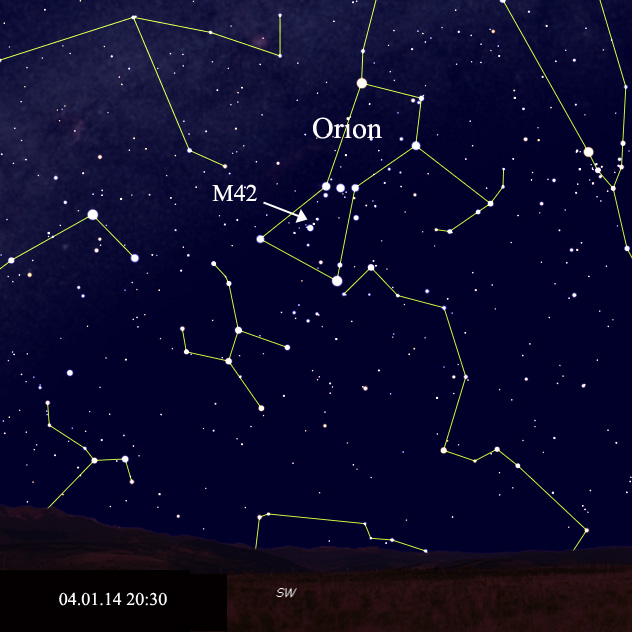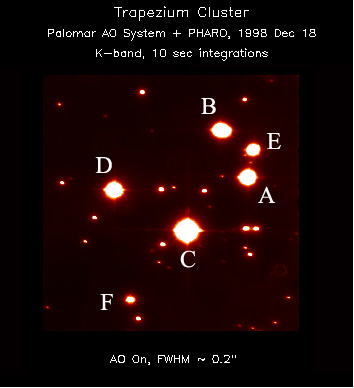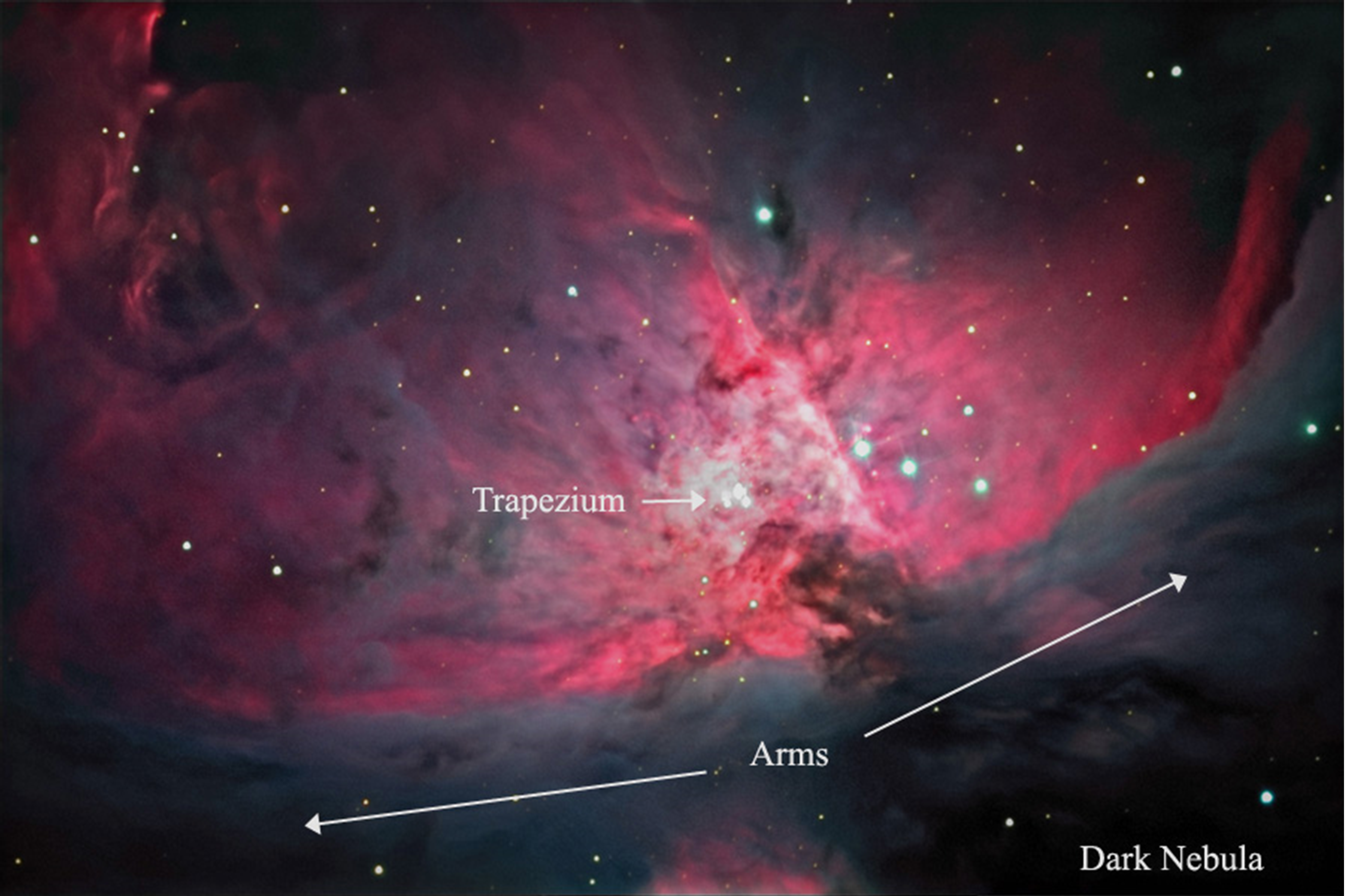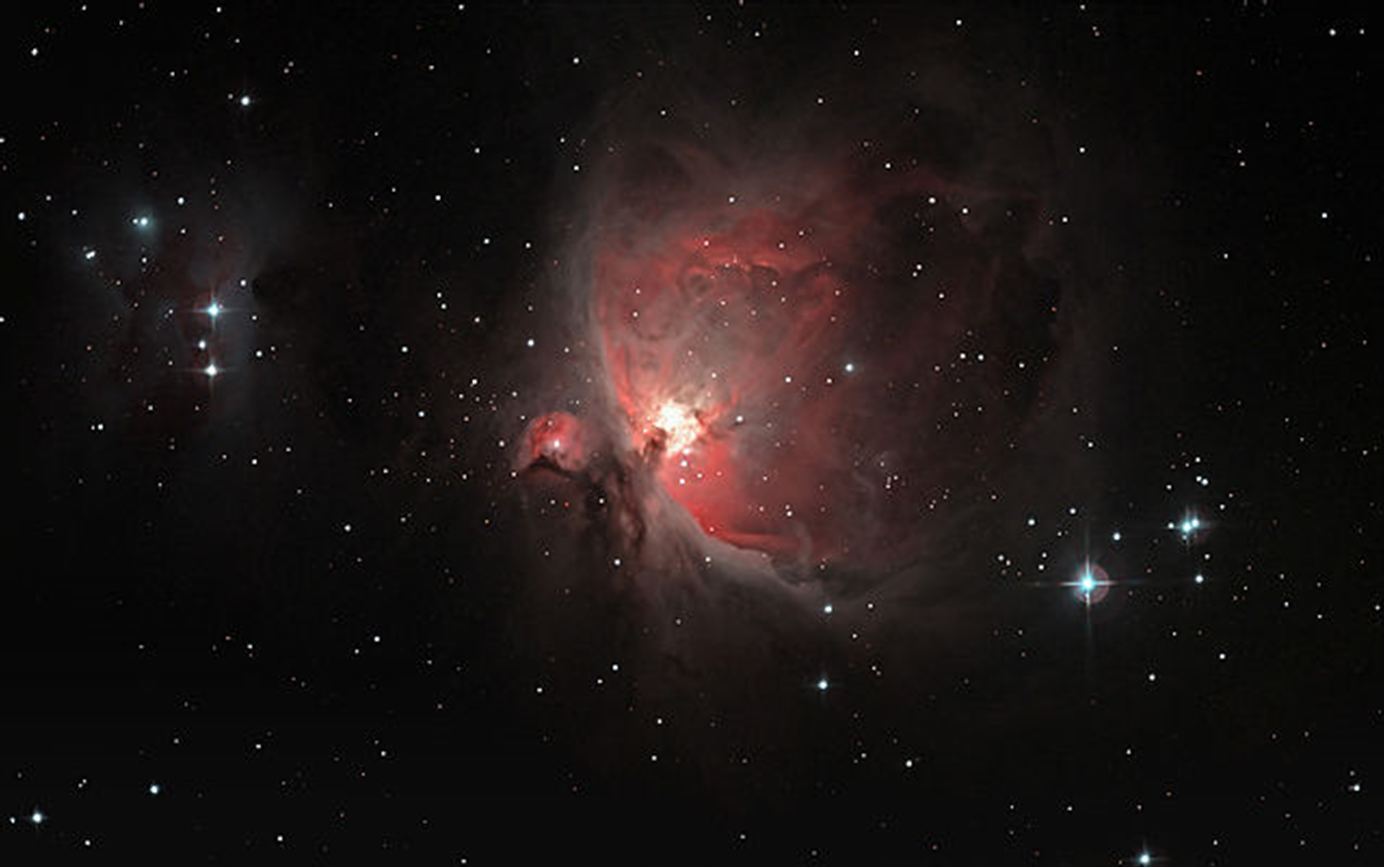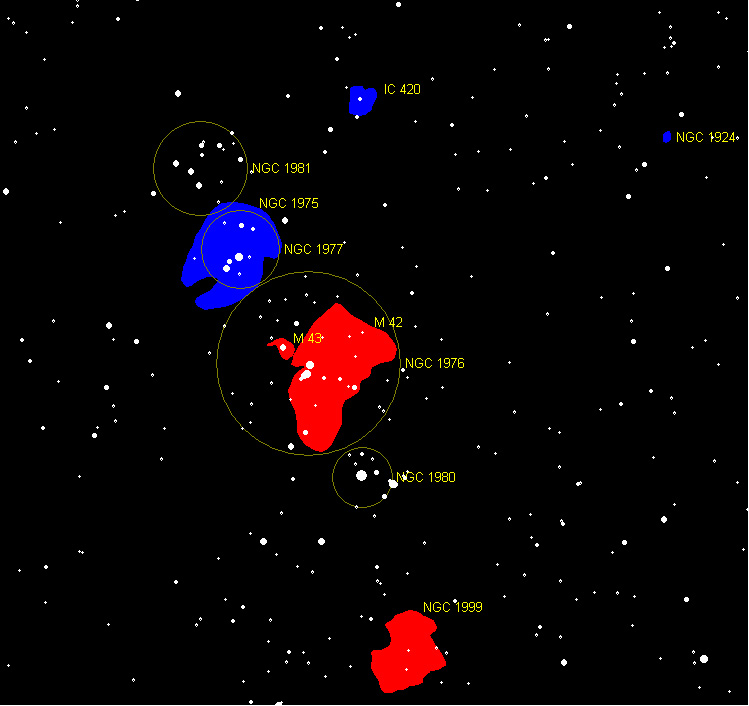
The Great Orion Nebula, or M42, is a favorite of deep sky observers, particularly in the northern hemisphere. In terms of visually available details and beauty, its only competition is the Eta Carina Nebula, visible in the southern hemisphere. Given its brightness, wealth and range of detail and ease to locate and observe with instruments from small binoculars on up, this M42 is a true crowd pleaser.
In this guide to the Great Orion Nebula, I'll describe some of its physical features and its surroundings, as well as some of the cosmic processes taking place that make it intellectually interesting, in addition to its tremendous visual beauty. Every fall I attend a star party with a large number of other observers. We go out during New Moon between mid September and mid October. At this time in the northern hemisphere, nights are getting longer and cooler, and the summer Milky Way is transiting, making way to deep sky views in the east. But the biggest treat always turns up just before dawn, when Orion rises over the horizon, telling us winter is approaching. It rises earlier and earlier as the season continues, dominating the sky come December and January, and slipping out of prime observing position around early April.
So, why look at it now, just after the spring equinox? Winter has passed, and so will this great object. It's time to say one last farewell to the magnificent Hunter, until he returns in late fall next year.
Located in the star forming arm of our galaxy, along the Milky Way, the closest arm of our galaxy, M42 is visible without optical aid as a fuzzy patch in Orion's sword, which is made up of the three prominent unaided-eye stars descend from Orion's belt stars.
This is a huge object: it sits 1344 light years from us, and its greater extent is several hundred light years. Thought to be 3 million years old, it is home to some of our galaxy's youngest, and hottest stars (much hotter than those in Hollywood).
When you view M42 with magnification in a telescope, you will certainly notice the four brightest, and hottest stars in the nebula - they are appropriately named the Trapezium, forming a very tight trapezoid. These stars are know as the A, B, C and D star. Seen in the image provided, they are the four brightest stars at the visible core of the nebula. On very good night, you can see a few other stars in the group; the E and F stars. While they all look bright in this image, the F star can be challenging, and E can be downright frustrating! But on a good night, when the air is steady, and you can increase magnification, all six members of this hot cluster will reveal themselves.
Look at the great sweeping arms of the nebula, outstretched like a birds wings. This is an area of dust that has been excavated by the stellar winds of the hot stars in the Trapezium.
At times, observers may see varying hues of color in the bright nebula around the Trapezium, and in the arms. Reds, browns and green tints - not vibrant, but suggestions, hints of color. What colors do you see? The arms themselves look like sculpted clay - amazingly fine detailed textures. It is a stunningly beautiful view!
Look too, just behind the Trapezium, and you'll see an area as black as can be found in space. This is a molecular cloud of hydrogen and dust that forms an inky black dark nebula.
It's the stuff that stars are made of, and The Trapezium stars are some of the results! If your eyes could see in infrared, through the dust of the Orion Nebula, you'd see thousands of young stars and proto-stars that are hidden to our eyes, deep within this stellar nursery.
While you're in the area, take note of the other great objects very close by. If these others were not located so close to the Great Orion Nebula, they'd be famous on their own: M43, looking like a comma adjacent to the dark nebula behind M42. Further still, but close by, are the reflection nebulae NGC 1973, and NGC 1975 and NGC 1977, which show well in a dark sky, and are collectively called The Running Man. You'll see wispy suggestions of star stuff enveloping several bright stars. Just to the other side of that is the Open Cluster NGC 1981. Lots to look at! But I'm sure you'll agree, the main attraction is M42.
As you let your eyes relax and take in the view, you'll feel like you begin to see more and more, picking up on dim nebulae extending out from the arms. Allowing your eyes to take it all in, you'll come away feeling like the true size of the nebula is twice what you thought. In truth, its hundreds of time the size you thought!
Since you know M42 is visible naked-eye, try a pair of binoculars on it. The nebula will be very obvious. If you have a telescope, and the bigger the better applies, there is a fantastic amount of detail to see. You'll come away knowing that, on those early fall mornings later this year, a treat awaits you! Maybe I'll view it with you at our star party here in California.
Let me know what you think of the Great Orion Nebula. Tell me some of your observations and send in drawings. We'll do our best to answer you and show some of your works!
Clear skies,
Mark Wagner
Mark Wagner is a life-long astronomy enthusiast and deep sky observer. He has spent the past twenty years popularizing amateur astronomy in the San Francisco bay area through his writing and community building. A past president of the San Jose Astronomical Association, he founded what is now the annual Golden State Star Party in California. Leave your comments or questions for Mark Wagner in the comments section below, and submit your sketches or images of the targets mentioned to the Orion Image Gallery.




